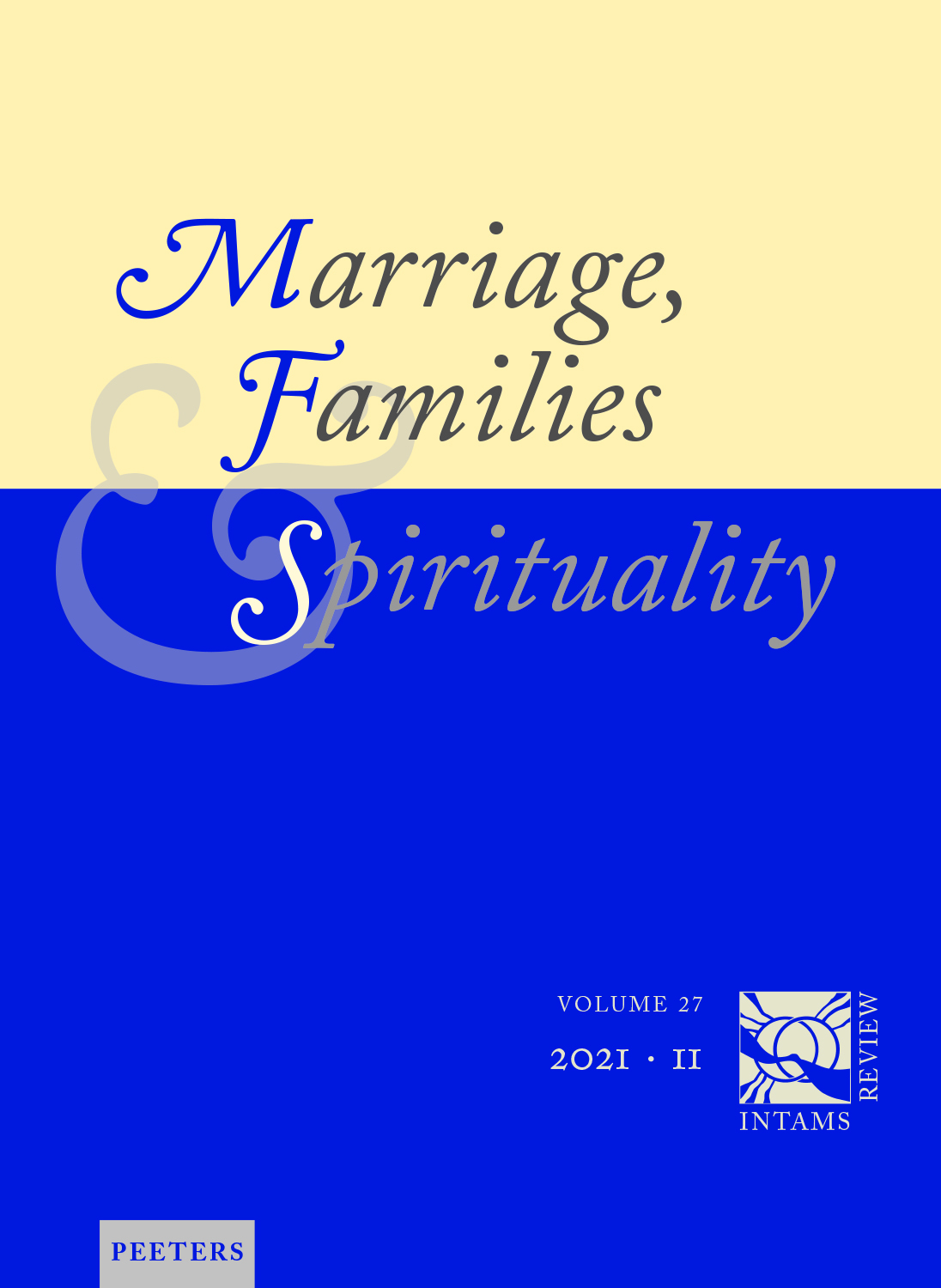 previous article in this issue previous article in this issue | next article in this issue  |

Preview first page |
Document Details : Title: The Christianization of Marriage Ritual in Late Antiquity Subtitle: Ecclesiastical Rites at the Bridal Chamber Author(s): RADLE, Gabriel Journal: Marriage, Families & Spirituality Volume: 26 Issue: 1 Date: 2020 Pages: 49-64 DOI: 10.2143/INT.26.1.3288949 Abstract : The article looks at one aspect of the marriage ritual – that concerning the bridal chamber – to explore how weddings received new meaning and adjustments as Jewish and Roman patterns were taken into a Christian context. Christian marriage rituals were not developed from scratch but for the most part took over the rites that were central to the culture in which the gospel was received. These included multiple stages, with highly codified actions. The new theological perspective was applied to the preexisting institutions. The article specifically examines the ritualization of the bridal chamber in the late antique world, looking at public speech and prayer at the bridal chamber. Examples from the Roman world are given to show that such speeches were a common feature of Roman life. Jewish practices are also mentioned, where the bridal chamber itself came to be ritualized with a symbolic canopy over the couple. The article then examines the Acts of Thomas, which provides an early, 3rd century, Christian description of the wedding ritual. It discusses the speech at the wedding given there and argues that it shows that Christian weddings presumed some kind of prayer before consummation. Next, other Christian sources are examined to show that there existed a variety of opinions on the usability of pagan wedding rituals in a Christian wedding. John Chrysostom and Gregory of Nazianzus are discussed. Gregory specifically alludes to bridal chamber rituals and is an example of a Christian bishop embracing and adapting previously established non-Christian bridal chamber rituals. The author then presents other later accounts of Christian weddings from the fifth to the eighth century. These show that many Christian areas did not know any wedding services other than those conducted at the bridal chamber while other places, like Rome and Constantinople, had a fully developed church marriage liturgy by the sixth century. The final section of the article looks at the bridal chamber itself in the early Christian world, which often was the place of the marriage ritual. What happened, the author shows, was a theologizing of the nuptial chamber, drawing its inspiration from Jn 3,27-30 where John the Baptist evokes a wedding context, as well as other gospel passages. These passages were taken up in the patristic period, in both orthodox and Gnostic circles, to develop a full theology of the bridal chamber. The article concludes that the bridal imagery found in Christian theology in more symbolic terms was developed through Christian contact with actual bridal chamber rituals, practiced throughout the Christian world, at least in the earliest years of the Church. Furthermore, this patristic rhetorical use of the bridal chamber in turn likely reinforced the significance of actual bridal chamber ceremony, which could now stand as an image linking the sexual union of the couple with the eschatological union of humanity with God. |
|


